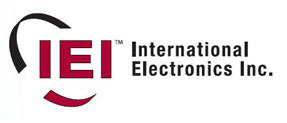
Access control is the perfect way to manage the flow of traffic in specific areas of your business. Generally speaking, the only type of access control that is used in a home would be a gate access to enter the driveway and electronic deadbolts. An access control point can be a door, turnstile, parking gate, elevator, or other physical barrier, where granting access can be electronically controlled. An electronic access control door can contain several elements. At its most basic, there is a stand-alone electric lock. The lock is unlocked by an operator with a switch or can be automated by replacing the switch with a reader.
Locking Mechanisms:
- Magnetic Lock
- Door Strike
- Door Plunger
- Turnstile
- Gate motor
- Electronic Deadbolt
Verification Devices
The reader could be a keypad where a code is entered, it could be a card reader, or it could be a biometric reader. Readers are usually just the means of transporting the credentials to an access control panel that verifies the number against an access list. To monitor the door position a magnetic door switch can be used. In concept, the door switch is like those on refrigerators or car doors. Generally only entry is controlled, and exit is uncontrolled. In cases where exit is also controlled, a second reader is used on the opposite side of the door. In cases where exit is not controlled, free exit, a device called a request-to-exit (REX) is used. Request-to-exit devices can be a push-button or a motion detector. When the button is pushed, or the motion detector detects motion at the door, the door alarm is temporarily ignored while the door is opened. Exiting a door without having to electrically unlock the door is called mechanical free egress.
A credential is a physical/tangible object, a piece of knowledge, or a facet of a person’s physical being that enables an individual access to a given physical facility or computer-based information system. Typically, credentials can be something a person knows (such as a number or PIN), something they have (such as an access card or badge), something they are (such as a biometric feature), or some combination of these items.
There are many card technologies including magnetic stripe, bar code, Wiegand, 125 kHz proximity, 26-bit card-swipe. Also available are key-fobs, which are more compact than ID cards, and attach to a key ring. Biometric technologies include fingerprint, facial recognition, iris recognition, retinal scan, voice, and hand geometry.

![]()
![]()
![]()

![]()